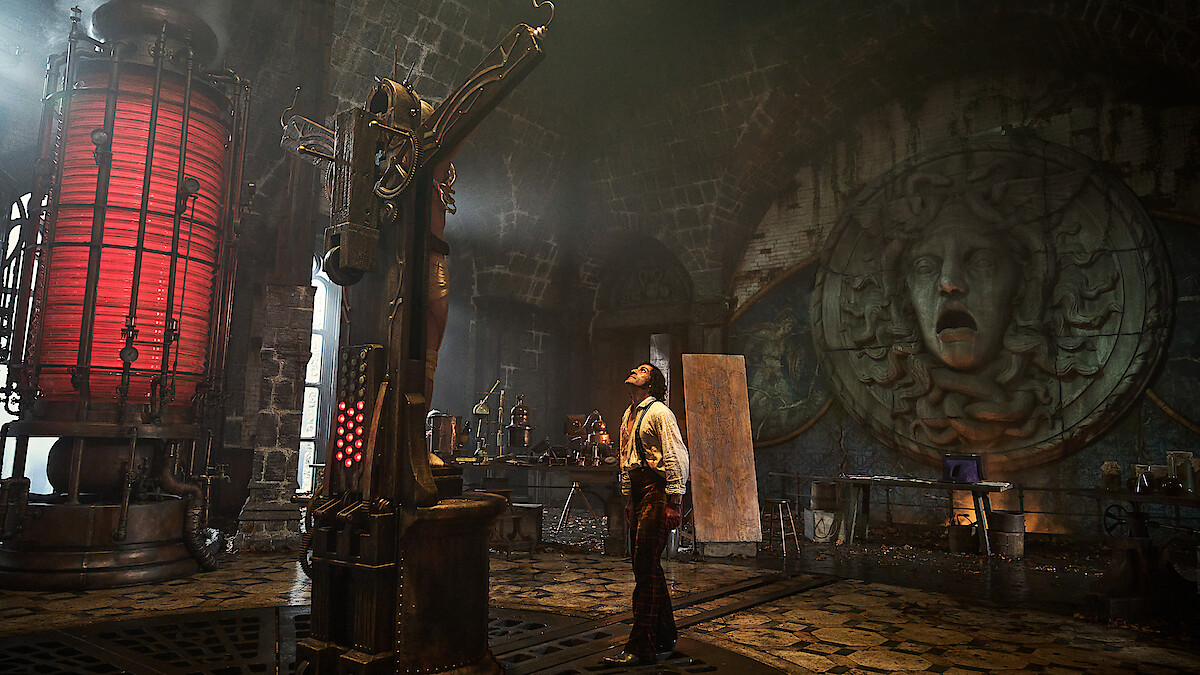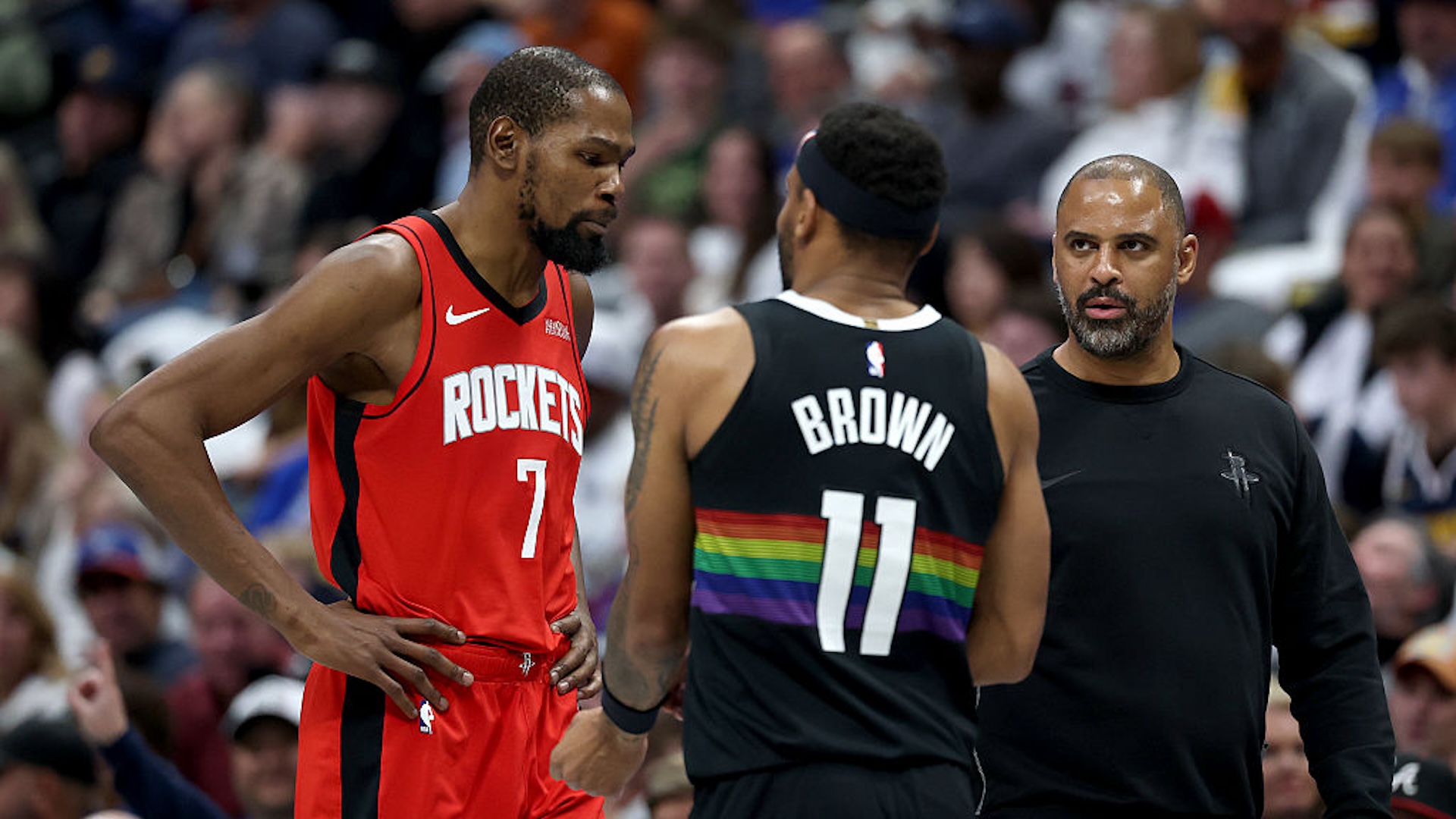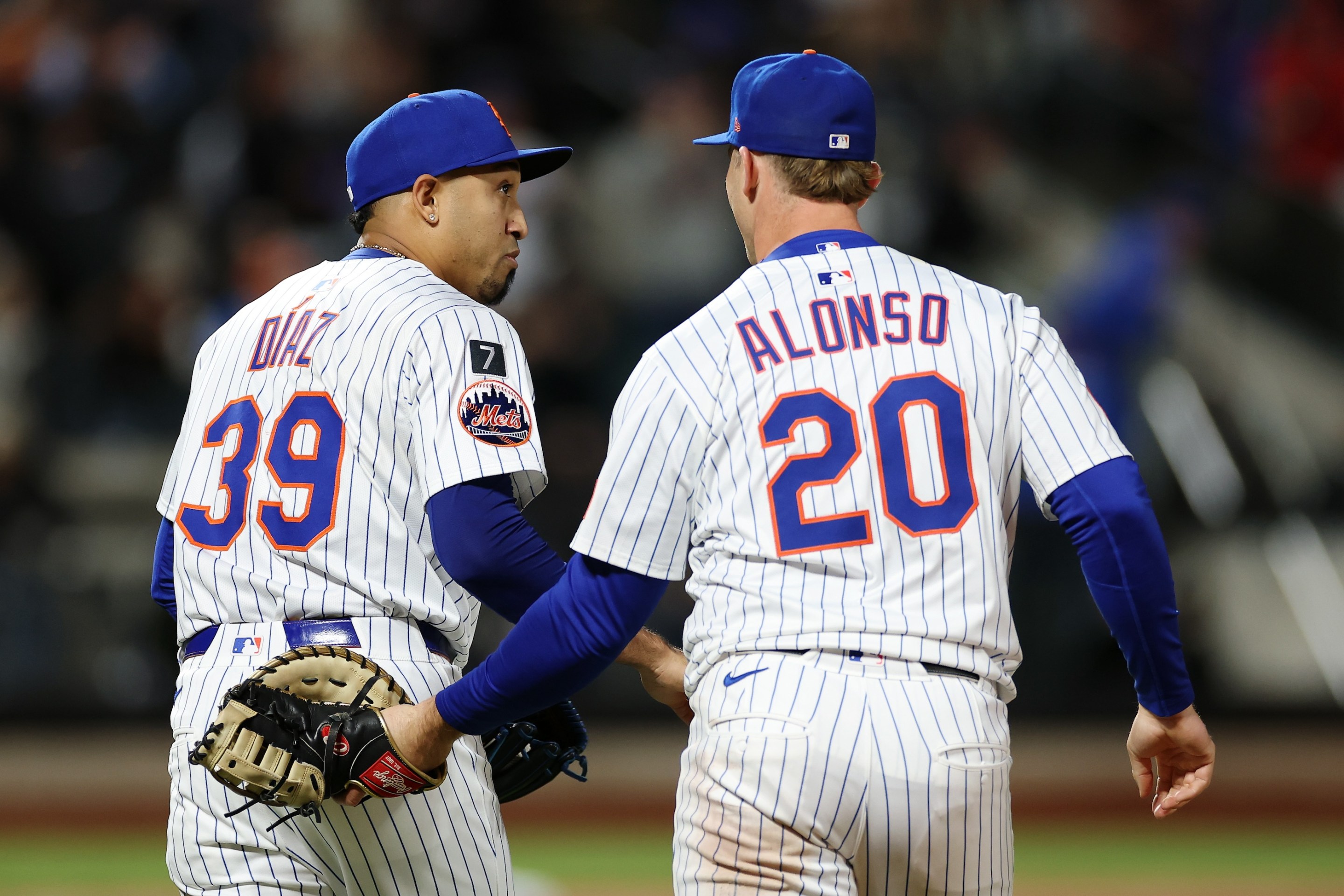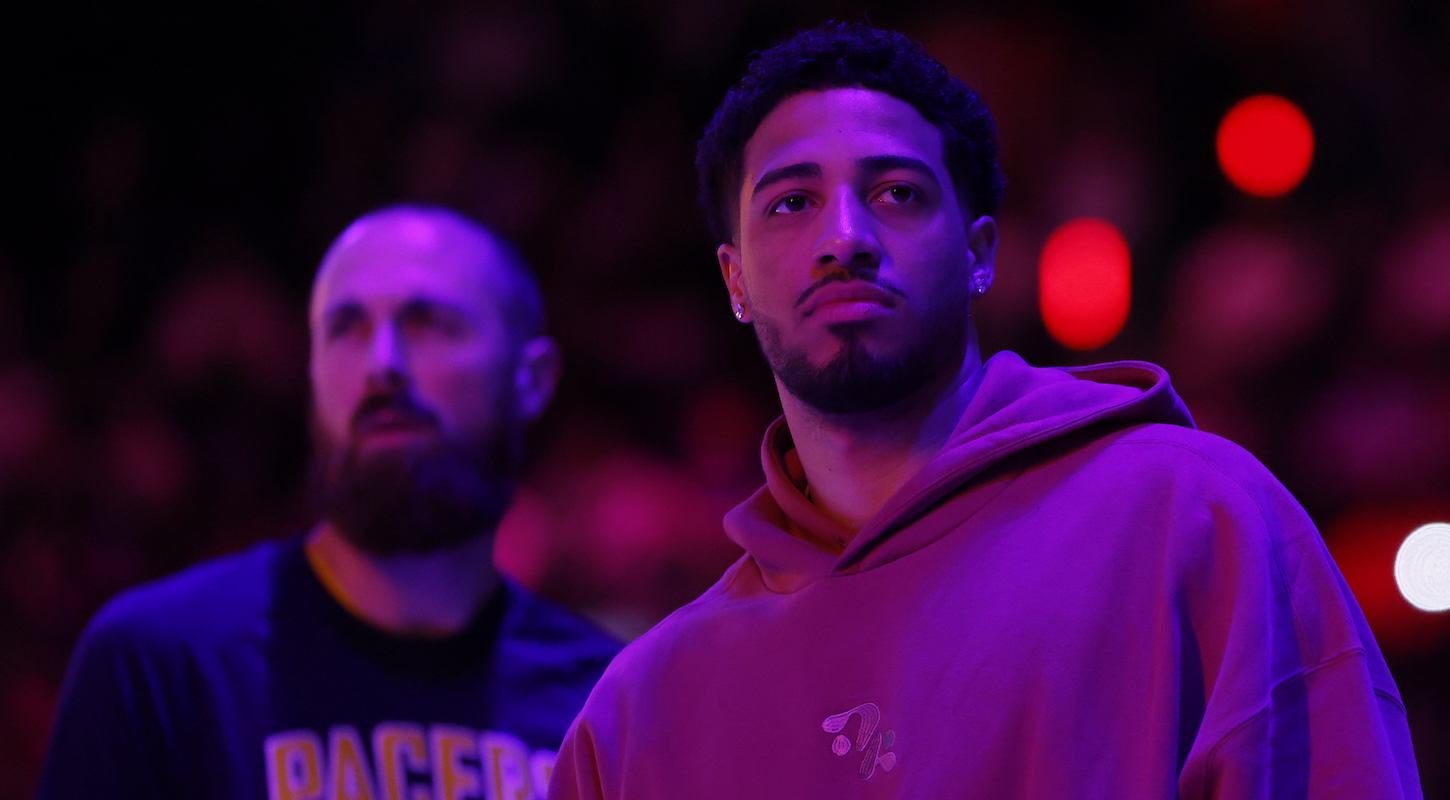Guillermo del Toro has devoted much of his career to sanctifying monsters. In his first feature film, Cronos, an aging antique dealer stumbles into eternal life, becoming a vampire who, rather than being dangerous or terrifying, is filled with pathos and understanding. For Pan’s Labyrinth, Del Toro created a ram with goat horns and milky eyes who ages in reverse and shepherds the young protagonist along her journey. In The Shape of Water, he built an amphibian man who can heal himself and fall in love. For decades, he has explained in interviews that Mary Shelley’s Frankenstein; or, The Modern Prometheus was his first true obsession, and he has been working on models of what his version of her Creature might look like since at least 2011. And now, finally, his version is here.
Del Toro’s Frankenstein (2025), which premiered in theaters in mid-October and was released on Netflix on Friday, is a gorgeous monster movie. The Creature (Jacob Elordi) is covered in thin, snaking scars that evoke Kintsugi, the Japanese art of rebuilding broken pottery with gold. The sets are layered with lush textures: velvet, granite, glass, paper, and snow. The camera swirls and dances around the actors; the wide lens captures whole worlds. There’s an opulent vibrancy in this production that matches the heightened romance and melodrama he brings to his adaptation of the icier, more realist original text.
In many ways, del Toro’s Frankenstein is not Mary Shelley’s. His Victor Frankenstein (Oscar Isaac) is an unhappy child, living in fear of his abusive father and fantastically devoted to his beautiful mother, whom he describes as belonging to him alone, but who dies giving birth to his younger brother, William. Sullen and angry, young Victor swears to become a more knowledgeable surgeon than his father, whose skills could not—or whose heartlessness would not—save his mother. Following the precipitous decline of his family’s fortune, Victor ends up in Edinburgh (not Ingolstadt, as in the novel), which was both the leading centre of 18th-century medical knowledge and later, famously, the home of grave robbers Burke and Hare.
Here, we find Victor Frankenstein the man. While arrogant and ambitious, Shelley’s Frankenstein is so obsessed with learning that he becomes pale and physically diminished. Isaac’s version is decidedly more virile—he mocks his tutors, rails against the small-mindedness of his peers, and lusts after his brother’s fiancée, Elizabeth, who looks remarkably like his mother (Mia Goth plays both characters). It’s Elizabeth’s uncle, the arms dealer Harlander (Christoph Waltz), who provides Victor with unlimited funding to pursue his goal of conquering death.
When he finally does, he is initially pleased with himself. In Shelley’s text, Frankenstein wakes to find the Creature at the foot of his bed and flees in both repulsion and existential horror. Del Toro’s Frankenstein is undaunted. He touches the hands of his living creation and walks him into the morning light. Elordi plays the Creature as an over-sized, terrified toddler, with his limbs out of his own control and his expressions exaggerated. However, Victor soon suffers from a sort of post-partum depression. The Creature does not advance quickly enough for Frankenstein’s liking—he knows only one word, Victor, and repeats it incessantly—so Victor chains him in the basement of the tower, hitting him with a switch, repeating the abuses of his own father. He is not afraid of his Creature, he’s just disappointed and, eventually, envious of how Elizabeth looks upon him with tenderness. It is as much a commentary on parenting as it is on creation.
Del Toro’s Frankenstein is less subtle than Shelley’s, and very much his own. Of course, as a text, Frankenstein can be whatever you want it to be. You can read it as autobiography, as Barbara Johnson did, or as an interpretation of the construction of gender, or as a demonization of science. You can read it from a psychoanalytic perspective, or as an environmentalist text, or as a spectacle of masculinity, or as a warning about the dangers of creation. Frankenstein is morally ambiguous and complicated, and it remains one of the most assigned books in American classrooms because it can sustain so many irreconcilable readings. Because it has a mythic quality, it can seem, sometimes, as though it’s a story that came from our collective imagination and belongs to all of us.
But the reason Frankenstein is a story we still talk about, that is still being adapted, that cannot be usurped even with millions of Hollywood dollars and award-worthy performances, is that it didn’t come from nowhere. It came from a remarkable teenage girl.
Mary Shelley had a life worth writing about. She was the daughter of Mary Wollstonecraft, one of the first great women’s rights advocates, and the radical political philosopher William Godwin. Her mother died 11 days after she was born from complications during her birth, and her father re-married a generally disliked woman whom he had impregnated. In 1814, at the age of 16, Mary fell for Percy Bysshe Shelley: a poet and philosopher who was already married. Lore has it that she lost her virginity to Percy in the churchyard, atop her mother’s grave. She got pregnant within the year, gave birth too early, and her daughter died. She got pregnant again and this time had a son, who lived.
Frankenstein’s own creation myth is one of the most famous in all of literature. In the summer of 1816, Mary and Percy and Mary’s half-sister Claire traveled to Geneva to spend the summer with the poet Lord Byron, whom Claire was pursuing romantically. It was a wet, dreary summer, and while stuck inside they challenged one another to write a ghost story. Each morning, the group asked Shelley if she had thought up a story yet, and each morning she had to say no. Until one night—like a bolt of lightning, or a vision from beyond—she laid down in bed and “saw the hideous phantasm of a man stretched out, and then, on the working of some powerful engine, show signs of life, and stir with an uneasy, half vital motion.” That dream became Frankenstein, and in 1818, the first version was published with edits by her then-husband Percy. In it we can see Mary Shelley’s fears: Mothers die, children die, love is lost, and creations take on a life of their own.
I say the first version, because Shelley didn’t really let the story go. In 1823, a revised version of Frankenstein was published. The changes reduce repetition, fix verb tenses, and correct copy issues. This was also the first version to include her name, as the first version had been published anonymously. But she still wasn’t finished, publishing another version in 1831.
The 1831 version is more conscious, more aware of people’s perceptions of the Creature and their criticisms of the advancement of science. It is less atheistic. There’s an attempt by Shelley to pull back, maybe even to claw back some of herself from the story. By then, Shelley’s life was worse in almost every way. Her third child, her father, and her husband had died. She didn’t have enough money, and her perspective on the world as a widowed 34-year-old who had outlived two of her children was much bleaker. Yet still, even here, Shelley is unwilling to give us a Creature who is born evil. Instead, he is something made twice over: created first by Frankenstein, but shaped by humanity’s rejection.
“More than other novels, I think Frankenstein tries to reckon with morality. It wants to question the standards we have of good and evil. I think that ‘Frankenstein’ is maybe the first moment in which we recognize ourselves in the monster,” Guillermo del Toro told Parul Seghal for the New York Times. “The monstrous and the demonic and terrifying narratives prior to Frankenstein were mostly outside forces coming after us. Most of them had a Judeo-Christian sense of good and evil: We were good; the things that were coming after us were evil.”
It’s certainly true that for more than a hundred years, people have read Frankenstein and come away from it believing that Victor Frankenstein is the true villain of the story. It’s a reasonable enough argument: he created a monster, fled it, refused to make it a companion, and allowed many people to die in the process. You could argue that by encouraging the ship captain at the end of the book to continue his journey to the North Pole despite hazardous conditions, Victor reveals that he has no awareness of his own responsibility. On the other side of that take, sits his Creature, who meets a child in the woods, learns that his last name is Frankenstein, and kills him. Then he murders two more innocent people for revenge.
In del Toro’s version of Frankenstein, there is no argument to be had. As William Frankenstein lays dying he literally points at his brother and says, “You’re the monster, Victor!” For much of the movie, Frankenstein wears red leather gloves—the blood is literally on his hands.
In the book, Victor creates the creature in a grief-stricken state that borders on insanity. As the book goes on, and more and more of his loved ones die, the grief threatens to overwhelm him completely. I recently read the horror novel Monstrilio by Gerardo Sámano Córdova, in which a mother consumed by grief begins to feed a fragment of her dead son’s lung, growing it into a monster whom she loves intimately. She loves it even as it kills neighborhood cats and attacks her mother and grows more and more violent. This is a more interesting interpretation of Frankenstein than one in which a creator hates its progeny for existing, and the Creature remains pure.
The most disappointing part of del Toro’s version is the fact that the Creature himself does remain blameless. When he kills someone, it is always because he was provoked, hurt, or in danger. The Creature himself is an immortal angel, who Elizabeth surmises might be born without sin. As in the book, the Creature comes to understand his total alienation from a social world that cannot accept his hideous appearance, but unlike in the book, this does not drive him to commit evil acts.
By removing the moral complexity from the Creature, del Toro also dampens his own finale. “The fact that in the end both characters reach an equal degree of alienation and self-torture and indeed become indistinguishable as they pursue each other across the frozen polar wastes indicates that the novel is, among other things, a study of the impossibility of finding an adequate model for what a parent should be,” Barbara Johnson wrote about the book. While in the movie, Frankenstein becomes more like the Creature—humble, capable of love, and sorry for his actions—the Creature remains in every way superior to Frankenstein.
Near the end of the movie, the Creature and Frankenstein sit in the ship captain's quarters having a heart-to-heart. Frankenstein is dying, and the Creature has just forgiven him. “Perhaps now,” the Creature says, “we can both be human.” But they can’t be. Del Toro’s body of work has reiterated over and over again that humans are monstrous, violent, and broken. By denying the Creature cruelty, he also deprives him of his humanity.







